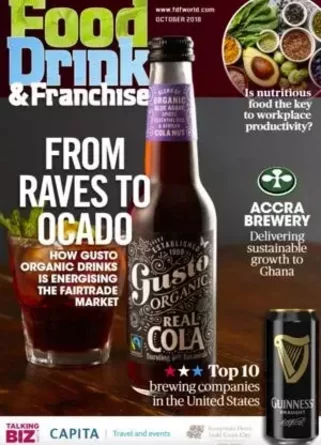
Planet Earth has existed for billions of years and experienced great change over time. Animals, habitats, land and species have been lost. With the impact of climate change, the human race is facing the loss of food, alongside a rapidly growing population.
Avocados were almost overeaten to extinction by giant armadillos in the Pleistocene era and this invites the question - how many foods didn’t make it?
Here are Food Digital’s Top 10 foods which we might lose to the population crisis or climate change (no known threat of giant placental mammals, yet).
10: Food, generally
On planet Earth, three things are rising:
- The human population: increased life expectancies, more children and improved healthcare are causing people to live longer.
- The temperature: over every decade since 1880, the Earth's temperature has risen by 0.14° F / 0.08° C, which is making it harder to grow certain crops and maintain livestock in certain areas.
- Sea levels: as a result of this change in temperature, arctic ice which has been frozen for thousands of years is melting, endangering land below sea level.
These three combined mean there is less space to grow food and more people who need to eat.
However, due to innovations such as vertical farming and cultured meat, foodtech may be the answer to keeping the planet well fed.
09: Oranges
Global production volume of fresh oranges 2019-2020: 46.6m metric tons
In the Californian orange harvest, there was a loss of 5.3% of the fruit, 12.3% in Texas and 16.8% in Florida.
Ironically, hundreds of tonnes of fruit have been left to rot in Queensland, Australia, after a labour shortage meant that the fruit was unable to be picked and sold at its peak ripeness.
08: French Wine
Revenue: €12b
Climate change does not always mean the planet is getting hotter. The spring of 2021 has been the coldest in Europe since 2003 and in France, unusual sub-zero temperatures have destroyed harvests. Vineyards in Bordeaux, Burgundy, the Languedoc and the Rhône valley have been badly affected. "It's a national phenomenon," said Jérôme Despey, head of the FNSEA farmers' union.
07: Chocolate
The global market $44b
Cacao trees, which produce cacao fruit, require pollinating. Botanists have discovered that their usual pollinators, various species of midges, are showing less interest in the tree. The reason for this is a little unclear - but climate change and agricultural intensification are the suspects. At this rate, 33% of cacao trees will be lost by 2050.
06: Fish
4.6m fishing vessels in the world
Since 1970, freshwater fish populations have decreased by 76% and fish weighing more than 30k, known as mega-fish, have declined by 94%.
According to animal wildlife charity WWF, agricultural pollution, the impact of dams and sewage as well as overfishing, have all led to one in three fish species threatened with extinction.
05: Beef
There are 1.5 billion cows on the planet
The beef industry uses 60% of global agricultural land for cows to graze upon and cows drink up to 20 litres of water per day.
In 2021, 821m people live in food-insecurity and the beef industry is under pressure to take responsibility for the level of land it uses, which could be used to feed humans.
04: Tea
Global revenue: $200b
A report from the charity Christian Aid, which works with tea farmers in Kenya, shows that the world’s biggest black tea producer is facing unprecedented weather patterns. This includes rising temperatures, spontaneous rainfall and longer droughts, all of which impact tea crops.
03: Coffee
The global caffeine industry employs 125m people
It’s estimated that up to two billion cups of coffee are drunk each day. But in a 2019 assessment to the risks against the world's coffee plants, 60% of the 124 identified species are close to extinction. According to botanists, coffee cultivation is being hampered in Africa due to human-led deforestation and human encroachment, as well as disease.
02: Honey
Out of the 100 food crops humans use most frequently, which sustain 90% of the world’s food system, bees pollinate 70 of them.
According to the ice cream manufacturers Häagen-Dazs (which use honey in their dairy products), bees are in danger for four main reasons (and thus, so is ice cream):
- Pesticides
- Parasites
- Poor nutrition
- Stress caused from climate change
The company has donated over USD$1m to pollinator research and installed miles of permanent hedgerow, to create a pollinator habitat for bees
01: Water
75% of the human brain is water
Rising sea levels does not mean that there is more water to drink, especially across in-land areas. According to the United Nations:
- More than two billion people live in locations experiencing high water stress.
- In 2021, 1.4 billion people live in water vulnerability.
- Whereas 4 billion people experience water scarcity in at least one month of the year.
Up to 700 million people could be displaced by water scarcity, by 2030.



